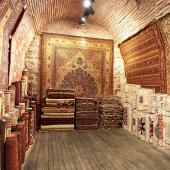Indian Fashion
At first glance, Indian clothing usually is made out of quite colorful and flowing, long materials. Anyone who travels in India, can make some things wrong with regards to dresses from the locals point of view. Tank with large cut-out or short skirts are an absolute taboo in India. But what may woman / man wear, and which rules are to be followed when visiting India?
Indian garments are very traditional. Women's dresses reflect their religious commitment, their origins and the social position. The garments are very diverse and colorful. Almost all women wear in India a "Sari". This scarf is up to nine meters long, unsewn, rectangular and traditionally shows a wide jewelery edge in a different color at one end. Material, which does not come into contact with a needle, is considered to be "clean" in India. There are even regionally different ways of winding for wearing the Sari. The material is made out of cotton or silk. The stronger the color and the more elaborate the embroidery on a Sari, the more sophisticated. Woman wear a traditional shell called "Choli" under the Sari. The blouses are cropped and have short sleeves. They are usually made out of the same material as the Sari itself. A Sari is one of the most beautiful and elegant garments in the world and can be considered as the national garb of India. Even international designers have already adopted the Sari in their fashion creations.
Indian men also wear traditional clothes such as "Kurtas", "Lungis" or "Dhotis". "Kurtas" are collarless shirts that are cut loose. "Lungi" is a traditional wrap skirt, which is preferably worn by men in India. A "Dothi" is the counterpart of the women´s "Sari". It describes the traditional Indian men trousers. Comprising of one long piece of lightweight cotton, it is tied together at the waist and then wrapped around the legs like trousers.
Jewellery of course naturally belongs to every Indian woman. Starting with the classic red dot on the forehead, the "Bindi", additionally tons of silver and gold jewelry, such as bracelets or nose plugs, belong to a perfect Indian stage entering. Nose rings or plugs are symbols of purity and marriage.




